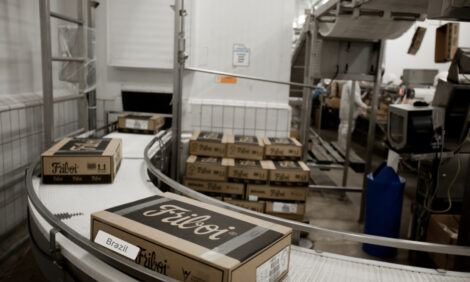



Is It Time to Capture Direct, Maternal Heterosis?
US - Longevity, rebreeding and calf survivability are gaining importance as the nation’s cow herd becomes more straightbred.This is likely because commercial cow-calf producers have forgotten or ignored hybrid vigor (heterosis) says the North American Limousin Foundation. A crossbreeding programme can increase lifetime production by more than 20 percent if you design it to capture both direct (individual) heterosis in crossbred calves and maternal heterosis in crossbred cows.
Scott Greiner, an Extension animal scientist at Virginia Tech, explained that the advantage of the crossbred calf is two-fold: an increase in calf livability coupled with an increased growth rate relative to its straightbred parents.
To illustrate the first point, Cathy Bandyk, an animal scientist at Quality Liquid Feeds, cited an in-depth multibreed analysis done at the US Meat Animal Research Center (USMARC) in the 1970s. It showed crossbred calves exhibited less death loss and better gains – and, therefore, more pounds of weaned calf – compared to purebred animals.
“Death loss among the crossbred calves was just 5.2 per cent, compared to 14.2 per cent for the purebred calves,” she said.
Research has shown weaning weights for crossbred calves are 5 per cent greater than those for straightbred calves, and yearling weights are 4 per cent greater. Roy Burris, an Extension beef specialist for the University of Kentucky, noted that two-breed–cross calves weigh about 30 pounds more at weaning than straightbred calves, and calves averaged about 80 pounds heavier at weaning when they were out of a two-breed–cross cow and a third breed of bull.
Historical data also show consistent performance advantages for crossbred feeder calves and finished cattle, Ms Bandyk added. Again referring to USMARC research, she said the calves of British-based cows and Continental or Bos indicus sires had significantly reduced rates of bovine respiratory disease (BRD).
Frank Padilla, director of member and commercial relations for the North American Limousin Foundation (NALF), has witnessed that better health in the feedyard and said, “That’s why feedyards like buying calves that will have good hybrid vigor. Crossbred steers can show a $45 per head advantage over straightbred steers.”
Commercial cow-calf producers realise even more benefits from crossbreeding when they use crossbred cows because maternal heterosis results in improved cow fertility, calf livability, calf weaning weight and cow longevity. Those cumulative effects increase productivity tremendously, said Bob Hough, executive vice president for NALF.
“Maternal heterosis is expressed in the crossbred female’s progeny, such as their heavier weaning weights due to her increased maternal production,” he explained.
Mr Padilla pointed to research that showed crossbred females to be 8 per cent more efficient than purebreds, to live 38 per cent longer and to have 25 per cent more lifetime production in pounds of calf weaned. In addition, first-calf crossbred heifers have shown a 7 per cent advantage in conception rates compared to their straightbred herdmates.
Hybrid vigor also gives crossbred cows stronger immune systems; hence, they develop better immunity after vaccination. They then impart better colostrum to their calves, keeping them healthier during their early days.
Ms Bandyk said USMARC researchers found that crossbred calves from straightbred cows weighed 8.5 per cent more than straightbred calves, crossbred cows bred back to parental breed bulls weaned 14.8 per cent more pounds of calf, and crossbred calves from crossbred cows were 23.3 per cent heavier at weaning.
“Crossbred cows weaned calves that were 38 pounds heavier than similar straightbred cows, even though crossbreeding had virtually no effect on birth weights,” she noted, referring to data from Texas A&M University. “No price premium for a certain breed can help overall returns unless it is large enough to overcome the reduction in total pounds weaned or sold.”
Mr Padilla said the benefits of crossbreeding have proved themselves many times over in university research, at USMARC and on ranches across the country.
“Crossbred females are 30 per cent more productive over their lifetimes,” he stated. “Some models show a planned crossbreeding program can add more than $500 over the life of a crossbred cow. That’s about $50 per year.”
That looks even better when you consider, as Montana State University research has shown, that the average crossbred dam remains in the herd about two years longer.
USMARC studies illustrate that using crossbred cows reduces the breakeven costs of production by about 10 per cent. And the opportunity costs of ignoring heterosis are cumulative because small losses add up to a substantial drop in lifetime productivity.
David Daley, is an associate dean in the California State University-Chico College of Agriculture, where he directs the school’s beef programme. He also manages his own herd of several hundred commercial cows. He summarised the matter this way: “It is time for many producers to design long-term, simplistic plans that capture maternal heterosis. I would not want to manage cattle in any environment without that incredible value.”
TheCattleSite News Desk


